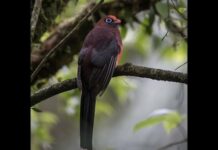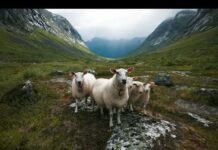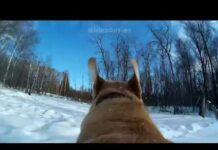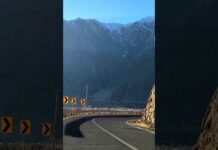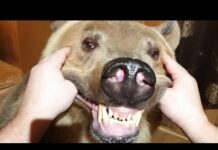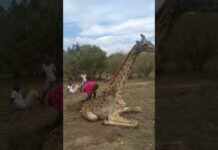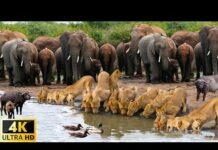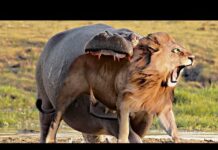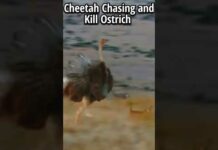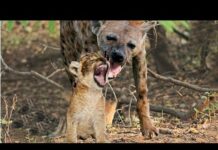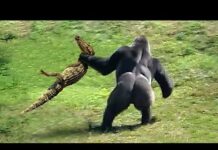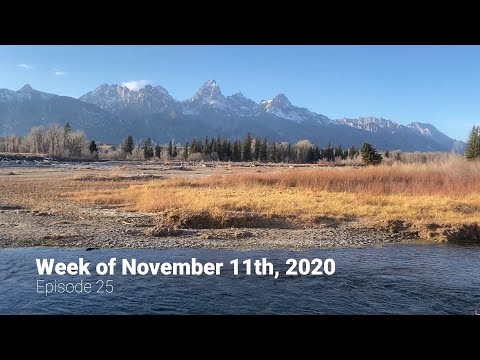Join us on Facebook live every Wednesday 5:30MT for a couch vacation! With a rebroadcast on IGTV. This week we have the latest on Grizzly 399, all about mule deer migration, the evolution of bison, foxes hunting and more along with our trivia question of the week and ask a biologist segment! We hope you will join us!
while many hi everyone and welcome to this week's wildlife wednesday weekly roundup i'm your host tim lee thompson and we've got some great video from all over the greater yellowstone ecosystem to show you this week the way this is.
Going to work is our guides have been out and about taking video throughout the region of all the local wildlife and their goings on throughout the week we're going to show you that video then you'll get a chance to enter our trivia question of the week giveaway and lastly i'll be answering your.
Questions live so if you've got a question for a wildlife biologist about oh i don't know botany geology all sorts of different things do go ahead and ask me in the comment section and we'll see if between me and maddie our naturalist who's moderating the comment section tonight.
Can't get you an answer our first segment this week is always it's always about grizzly bears let's check in with some of our famous favorites from grand teton national park while many of our black bears in grand teton and yellowstone national park have gone in for hibernation for the winter.
Quite a few grizzlies are out and about in their final stages of hyperphagia and stuffing their faces 24 hours a day in preparation for that hibernation i wanted to give you an update on a few of these bears a big favorite in grand teton national park bear number 793 oftentimes known as blondie was spotted.
In northern grand teton national park and sadly she did not have her cub of the year that we had seen her with this spring with her now cubs do face on annual mortality of about 50 percent before the age of two so it's not necessarily surprising that blondie here might have.
Lost her cub but it is too bad in that blondie tends to have poor success rates with rearing cubs and the vast majority of her cubs have been lost before the age of two the good news is she's a pretty middle-aged bear she's got a lot of cub rearing.
Years ahead of her and we look forward to seeing her in the future we oftentimes see blondie in the spring but to see her in the fall like this is a real treat so big thanks to our naturalist maddy now i know a lot of you guys are wanting an update on grizzly bear.
399 who most commonly is seen in grand teton national park those of you guys who follow our broadcast every week will know that she went for a little bit of a walk about for the last couple of weeks um she ended up traveling quite a ways south of her normal territory now 399's.
Normal home range is in northern grand teton national park just below yellowstone national park she ended up taking a walk along the west bank of the snake river almost to the end of the jackson hole valley then she took a turn and was sort of hanging out.
In southern jackson hole for about a week and the good news is that she's taken a turn she's heading back up and has made it back into grand teton national park now her migration to the south was certainly not ideal because she's now taught these cubs that moving into human use areas full of.
Traffic and cars is a good idea when food becomes scarce in the fall and all four of these quadruplets should they make it to adulthood are now going to remember and may use those ideas in the future if they need to find food but the good news is all is well 399.
And the cubs are safe in grand teton they're all doing just fine and i know there was a lot of concern about uh them being in the south so i wanted to reassure everybody that all is well there all four cubs look really good 3.99 looks good and we anticipate in the coming weeks.
That she will head to her hibernatory den so a very impressive thanks to our naturalist maddie who actually took this video through his binoculars i challenge you to try that it's nearly impossible to do uh so thanks very much to maddie for that.
Great update on everybody's favorite bear so still some good bear watching out there in grand teton national park and we'll continue to update you as these bears move around this fall so a great update from our local bear population.
And a big thanks to maddie who is responsible for a lot of that footage and who's moderating our comment section tonight so definitely say hi to maddie in the comments and i'd love to know where everybody's joining us from this week as well it's always really fun to see all the really far-off places.
That people are coming to check out our biologists and our local wildlife all right so next up i think it'd be pretty fun to talk about one of the species in the greater earlestone ecosystem that sometimes gets overshadowed by other charismatic other charismatic megaphone which is just a funny term.
That means big fuzzy exciting stuff let's tune in with tyler to talk about one of my favorites mule deer imagine this having to migrate 200 plus miles so that you don't starve for the winter while being chased by wolves while carrying 20 pound antlers on your head.
That is the task that one of the iconic symbols of the west has to do every fall this creature is the mule deer let's go and check out this beautiful ungulate that caught that is a symbol for the american west the mule deer is the western equivalent of the whitetail deer.
And these two species have many similarities and a couple of differences they both have very similar diets mule deer and white-tailed deer both use their narrow muscles which are very different from the noses of moose and larger herbivores like bison to select the most nutritious plant.
Particles here is a buck mule deer who is using that narrow delicate muzzle to feed on plant leaves and nutritious green grass this is really important for mule deer especially during the winter months as mule deer can actually.
Starve to death if they eat only grass during the winter they are highly dependent on brows and sagebrush and more nutrition more more nutritious shrubs and leaves and in the fall and winter this need for highly nutritious forage is what drives the great mule deer migration.
Some of these mule deer will actually migrate over the grand tetons into idaho to spend the summer there and then back over the tetons across jackson hole and over the grove mountains to winter on the grasslands of wyoming and these migrations and huge movements.
Of animals are largely driven by the need of food in winter here we have two fawns which are about six months old right now and what's pretty amazing is that these funds currently are learning that ancestral migration that.
Has likely gone on for thousands of years and these funds will pass on this knowledge to their funds and hopefully this knowledge of migration will continue through the generations which is why it's so important to protect these migration corridors.
Mule deer actually learn their migration unlike many birds where migration is instinctual mule deer actually have to learn where to travel for the winter here we have a doe and a fawn aloe grooming which demonstrates their very close bond this fawn is going to learn that.
Migration from its mother thanks tyler now that he's given us a great rundown of mule deer and jackson hole and their amazing annual migrations i thought it might be fun to focus on one particular mule deer who's making her big migration right now i am referring of course to the world.
Famous mule deer 255. lots of people know who grizzly bear 399 is but are you familiar with deer 255 the wyoming migration initiative has been tracking mule deer 255 since about 2013 and she makes an unbelievable migration let's check out more now when people think of massive.
Migrations around the world they may think of wildebeest or even caribou but this mule deer 255 has made one of the largest land animal migrations in the world at 242 miles since 2016. now she usually starts her migration in island park idaho but over the last couple of years she actually spent her summer in this.
Really great habitat in moran wyoming part of grand teton national park last fall she set out made this migration to the south going right along the edge of jackson hole and then stopped south of jackson in the hoback basin from there she actually started to make.
This massive massive journey down towards pinedale there's a bottleneck area that the luke lynch wildlife habitat is helping to conserve to allow mule deer migration and we actually got a chance to see deer 255 on a game camera last year which was a pretty cool thing to see.
Conservation easements are an incredibly important part of migration and migration habitat and the wyoming migration initiative is working in partnership with people like the wyoming game and fish and the nature conservancy to try and create more of these corridors to allow deer.
To migrate more freely she usually spends her winters in the red desert which is where we hope she's headed this year as well and a big thank you to the university of wyoming the university of oregon the mule deer foundation and all the great organizations that help keep mule deer like 255.
Continuing their ancestral migration every year so a big thank you to the wyoming migration initiative for letting us show you and share the story of deer 255 they really are an amazing organization and if you go on their website you can actually check out some of these migrations as they're occurring.
Here's 255's migration from last year you can go to their website it's at uh wyoming let's see migrationinitiative.org and i want to really give a big shout out to the wyoming immigration initiative and the cartographers at the university of oregon infographics live at infographics lab the initiative was.
Found in 2012 to do innovative research on ungulate migrations and share the findings with the public so you can learn more about this on their website and i do also want to highlight that they are an organization that could use your support.
One of the things we like to do on this program is to highlight some of these amazing non-profits and organizations that are doing their part to keep our wildlife safe so if that's something you're interested in definitely go to their website check it out they work in partnership with the.
University of wyoming they're really really really a cool organization we actually have their bumper stickers on all of our vehicles that say i stopped for migration lots of big migrations happening from jackson hole all over the place right now our bighorn sheep are.
Migrating down to lower altitudes our deer of course are migrating as tyler was talking about in all directions our elk are migrating from grand teton and yellowstone national park down to the national elk refuge pronghorn antelope are migrating via the path of the pronghorn down to pinedale.
Wyoming birds are migrating all over the western flyway lots and lots of travel going on here in jackson hole so if you want to learn more about any of those ungulate or mammal species and their migrations definitely check those guys out they're.
A pretty amazing organization and they could certainly use your support alright so that was pretty fun let's check in next with seth who's got some great video of red foxes that he and tyler took hello everyone seth latka here with jackson holt ecotours and i'm just checking in with you guys.
To share another awesome animal encounter that i had in grand teton national park this is yet another just one of 60 plus mammals that you could potentially see in the greater yellowstone ecosystem in this case had the opportunity to hang out and watch a red.
Fox on tour they are part of the canine family however similar to the feline family foxes have the ability to retract their claws they're the only canine that can do this so that kind of sets them apart from the rest of the species in the canine family but just like.
All the others in the canine family they're excellent hunters and they have a great sense of hearing they can actually hear a watch ticking from 40 yards away so those big goofy ears definitely come in handy when helping them to hunt so you'll often see them in the spring and.
Summer and early fall in tall grasses in the woods hunting for rabbits and rodents and even birds if they can sneak up on them but those ears definitely come in handy in tall grass and also snow they can actually move their ears individually like satellites so when.
They're going through tall grass and they think they hear something they can stop and they can change the angle of their ears and really triangulate exactly where that prey is hiding in the tall grass same thing with when they're hunting in the winter in the snow this is really cool if you ever get an.
Opportunity to see this they will go hunt and you know sometimes a couple feet of snow and their hearing is so good and that triangulation and calculation is so good as they're walking quietly along the snow they can actually hear through the snow um the rodents um scurrying around down there and then.
Once they've triangulated exactly where they think that um prey is they'll jump straight up in the air and then go straight down into the snow their feet are kind of flailing out of the snow and then they pop back out a lot of times um with a prey with a successful hunt.
Which is just kind of crazy i always like to think about imagine if you could do that here through the snow and blindly catch something just jumping in with your mouth so they're really really interesting and i hope when you guys come out here you have the opportunity.
To see them hunting or coyotes hunting it's really cool to see them jump down through that snow and it's definitely something i always like to see so hope you guys come out and visit us we have more snow falling as you can see the mountains are beautiful with all the fresh snow all the animals are out and.
About and i can't wait to take you out on tour have a good one so some pretty awesome foxes there hopefully you guys enjoyed that i was pretty blown away with some of that amazing footage that tyler had to contribute that week so this week he gave it to me yesterday.
So in the meantime we've talked a little bit about our grizzlies some really big animals we've talked a little bit about our mule deer some hoofed mammals we've talked a little bit about foxes a little bit of a smaller carnivore let's go ahead and talk about a really.
Big herbivore laura has a great update for us on the history and evolution of bison hi guys this is laura thanks for joining me on a cold snowy day in western wyoming where i'd like to tell you about one of my favorite animals.
And also our national mammal the american bison bison are one of the most successful animals to have come to north america and today i'd like to tell you a little bit about how they got here and how they have evolved over over time to still be on our landscape.
Relatives to our modern bison came to north america from asia and europe more than 160 000 years ago the oldest known fossil that's been found in north america was was located up in the yukon territory in 2006 it was a bison leg bone that dates back.
More than 160 thousand years that fossil came from a species called bison priscus which was a predecessor species to our modern bison bison scientists of course know that bison must have existed in asia and europe long before that.
They lived on in an area that we called the mammoth step which was basically a large grassland area which extended from the british isles across europe across asia through siberia and then across what we call the bering land bridge.
Which spanned from siberia across towards alaska or northern canada during the last ice age the land mass existed because most of the earth's water was encompassed by glaciers so with that water all wrapped up in the glaciers.
The sea levels were lowered and therefore that land bridge was exposed allowing passage for animals like bison or even humans to come across when i was a kid i thought that the land bridge meant kind of like a drawbridge between.
Asia and north america but in reality this was a huge land mass which spanned more than 600 miles generations of animals and people spent their time on that land mass not knowing there was a destination into north and south americas when bison priskas first arrived to north america.
Via the bering land bridge they could not advance much past northern canada due to a glacial ice sheet but over time climate changed and conditions warmed up that glacial ice sheet began to melt and bison priscus was able to graze its way south into southern canada and the lower 48.
States but then once again climate changed and conditions got much colder creating a new ice sheet in canada which split the bison priscus herd into two distinct segments a northern herd and a southern herd the southern bison priscus herd continued to evolve.
Into a new species called bison lataphrons while the northern herd went extinct bison latafran the new species was a giant there was plenty of food there was little competition and low population densities so bison lataphrons evolved into a monster.
This thing weighed in around 4 400 pounds and had horns that were seven feet long their horns were straight instead of curved or hooked like on our modern bison but predators then learn to exploit the bulky bison lataphrons due to natural.
Selection and the survival of the smaller and more agile bison latifrons that species then transitioned to a new one called bison antiques bison antiquis then hybridized with another species of bison which came from asia and the two species created our modern.
Bison the plains bison or of course their scientific or latin name bison bison when europeans first arrived in north america in the 14 or 1500s it's speculated that there were between 30 to 60 million bison.
Across the great plains i just like to imagine how many bison that would have been when i'm out in yellowstone and grand teton national park i just like to think of the day when bison were everywhere from those 30 to 60 million bison.
European settlers decimated herds down to very few numbers by the mid to late 1800s in yellowstone national park for the lows of the low there were just 23 bison left on the landscape but of course bison are strong and resilient.
Species who have made a recovery nowadays there's more than 4 000 bison in yellowstone national park and over 500 000 bison in north america overall well thank you for watching i'll see you next week at the same time same place and have a good week.
Cheers so thanks as always to laura who does such a great job every week with such fascinating topics all i have to say to laura is what do you feel like talking about this week or i might send her on an assignment when you guys tell me there's something you'd like to see.
Which reminds me if there's something you'd like to have on this broadcast or hear more about i've been definitely hearing a lot of river otter requests lately do let us know we do take requests now as animals of course do go into hibernation some of those might be a.
Little bit hard to check out but certainly our animals that are awake for the winter are open season if you want to hear more about them so i do want to remind everybody of course if you're joining us for the first time you might have heard this before.
But if you're planning on visiting jackson hole in the coming weeks or months we do offer 10 off on our trips if you just mentioned the wildlife wednesday broadcast we definitely want to hear about if you're listening and enjoying what we're doing here.
So definitely keep that in mind all right so now comes my second favorite part of the broadcast which is our trivia question of the week so the way this is going to work is we're going to go ahead and show you our old last week's trivia question for which we already have a winner and then you'll have a chance to win a 10.
Gift card to our eco tour adventures store with this week's trivia question which hopefully i've given you guys a little bit of a stumper so i do want to highlight a little bit about our store we started it during the first wave of covid as a way to pay for employee health.
Insurance so if you are looking for some good christmas gifts or you just want to check it out or you're a big supporter of our program matty will put a link up to our store i definitely want you to check it out we've added like 15 items in the last week.
Lots of goods handmade by our guides some amazing books signed by photographers prints and more last week we had a request on the broadcast for that picture that ecotour adventures guide and owner taylor took this spring of grizzly bear 399. folks.
Told us that they wanted to have that on their wall and we do like to follow your request so guys we do have that up in the store and you can just get it as a print or you can get it framed or we even have it up as an aluminum print as well so if that's something you're interested in.
Definitely check that out i also want to highlight i talked a little bit about laura who just did our bison segment she's quite the artist this is her illustration of grizzly bear 399 and those quadruplets if you look pretty closely she's sitting on the throne of uh traffic cones and she's got a little ear.
Tag that says 3.99 it's pretty funny stuff if you'd like to own one of those stickers definitely that 10 gift card is more than enough to get you one so definitely get the trivia question this week correct to win all right enough about that let's start with last week's trivia.
Question which was brought to us by our naturalist sarah ernst and sarah ernst wanted to know from you all if voles and mice in the greater yellowstone ecosystem hibernate so if you feel like answering in the comments section this won't get you the gift card this week because we've already given it out.
But feel free to give us your opinion a yes or no will do which is due vice is that what you get when you mix mice and bowls together vice do mice and voles hibernate the answer is unsurprisingly drum roll no they don't hibernate just because something's a rodent.
Doesn't mean it necessarily is going to hibernate and mice and voles are both good examples in the greater yellowstone ecosystem of an animal who does not hibernate a really good example of another animal who does not is a member of the lagrammorth family the rabbit family the american pika also.
Does not hibernate they're all able to burrow underground where the warmth of the ground and the insulation of the snow keep conditions somewhere right around freezing and they're able to stay warm enough to survive without needing to hibernation needing to go into.
Hibernation by stashing food or by feeding from grasses and forbs from underground now i do want to remind everybody that there's a lot of things we're famous for here in the greater estonian ecosystem but one of them is is we have one of the greatest numbers.
Of species of rodent in the world and our mice and bowls are no exception so i wanted to go ahead and highlight these guys since we're probably not going to do a lot of programs on them so here in order we have the deer mouse the western jumping mouse the long-tailed vole the meadowvole.
The montainville the sagebrush vole the southern red backed vole and not pictured of course are the heather full and the water vole because it's almost impossible to get a good picture of a vole they almost never come above the ground except for in the dark of night and then.
That's kind of a hard photo to get so a big thanks to wikipedia who helped give me some of those images because i'll tell you what i don't have a single picture of a vole in the greater yellowstone ecosystem i definitely see them but they move too fast and i'm going to be honest with you guys.
If you ask me on a trip the difference between one bull and another probably not going to be able to tell but on the mice i definitely i definitely could probably tell the difference between our mouse species all right so that's pretty fun now for this.
Week's trivia question this is the one where you can win the 10 gift card just by commenting in the comment section what the answer is this one also comes to us from our trivia master sarah ernst she was looking through her footage from her trail game cam um which is a remote camera that she.
Set up out in the forest and she wanted everybody to answer this question which is are these um which species of bear are these are these grizzly bears or are these black bears if you look she actually took this photo and i thought that was kind of fun.
Patriotically on july 4th and she just got this footage is this of course a grizzly bear or a black bear if you know the answer to the question just go ahead and answer in our comments section and i will go ahead and um.
Make sure that we get one of you guys that great uh gift card to our ecotour store so take a look at it of course remember if you're trying to tell the difference between grizzly bears and black bears you want to look at all sorts of different features you want to look for the presence or absence of a hump.
You want to look for how big the ears are you never want to use size or color to decide whether something is a black bear or a grizzly bear all right i can see the comments rolling in guys definitely see if i stumped you this week don how'd i do did i get a good question this week.
Let's see if i uh was able to stump everybody all right this now of course is my very favorite part of the broadcast which is i'm here to answer your questions so if you've got a question uh for me about the greater elliston ecosystem about wildlife.
Something you saw during our broadcast tonight go ahead and ask me in the comments section now guys i've got my ipad here that i'll be answering your questions on so if you see me looking down it's because i'm looking at your questions here on the ipad so bear with me while i kind of.
Scroll and see what everybody had to ask today let's see here oh man lots of correct answers on our trivia question of the week nice job guys all right let's go ahead and start with um mark asks will there be a tv show about grand teton.
Ecosystem like there was for yellowstone called yellowstone live mark i don't know of any that are in the works but can i tell you a big secret about yellowstone live that drove me crazy so yellowstone live was pretty cool for those of you guys who don't know national geographic decided to do.
A broadcast where they had lots of cameras all at one time showing all the things that were going on in yellowstone more than half of those cameras were in grand teton national park they were not mostly in yellowstone and that's because wildlife density can be greater in grand teton.
Under the right circumstances they can be a little bit easier to see wildlife particularly if you're planning a broadcast like yellowstone live where you actually have to get wildlife to show up which is harder than you'd think i've worked a lot with a different film crews over the years from all sorts.
Of different national broadcasters as what's called a finder when you're coming to an ecosystem you're not familiar with you hire somebody local who definitely knows where to find things to go find those things for you and then you put your hosts on the camera and they.
Talk about the thing and um you know obviously because of agreements i can't necessarily talk about all the different companies i've worked with but long story short i'm quite sure that yellowstone live did employ some finders not us in this particular case um and some of those finders sent them off to grand.
Teton national park but they did call it yellowstone live it's a pet peeve of mine it's probably a little bit silly yellowstone national park grand teton national park are different things they're not the same national park but a lot of video programs oftentimes.
Do group the two of them together so when you're watching some show on the bbc or discovery channel or nationally geographic and they're talking about yellowstone and they're showing footage it's not just yellowstone live sometimes they are showing more often than not they are showing grand teton national park.
Um as part of that broadcast so keep your your eyes open and you'll see that um so i don't know if one in the mix i guess we're the closest you can get for now but maybe sometime soon for sure we can have something along those lines that's pretty awesome bobby went ahead and answered my.
Question of who uh where everybody was watching from and he's watching from good guyana oh my gosh that's really really cool bobby i'm so glad that you decided to join us thank you so much for taking your time to be with us this evening you're definitely the farthest away today.
From jackson wyoming so we appreciate you tuning in if you're further away than guyana feel free to comment in the comment section uh and i'd love to hear about it that's pretty awesome and then we had a lot of questions about uh the fox video why do foxes have bushier tails than.
Other canines you're right they do proportionately which is to say lots of canines have very bushy tails but foxes their tails seem almost bushier in some ways because of their size um so there's kind of some rules of thumb about tails in the wild one is the.
Longer the tail the more likely the purpose of the tail is for balance and the bushier the tail the more northern the climate in proportion to their body size the animal probably lives in so that tail serves two purposes number one it's super bushy.
Because when you curl up in a ball and a snow storm out in the open plains where foxes are native to you can cover up your face and your nose uh and your extremities which are much more prone to frost bites with that nice warm bushy tail and you can stay warm.
Through a snowstorm foxes of course can live in forest habitats but they absolutely can live also in the great plains where there's not always a lot of cover other than the lee side of a hill and so that tail becomes critically important for their survival in the winter.
Now the length of that tail which is as long as they are wide is actually a balance tool those foxes as you saw have to jump straight up into the air on tiptoes to thrust themselves into the snow and find food and that tail is key to that they give it a little bit like a balance and.
A counterweight to enable them to sail at the right angle into the snow it's actually really really cool stuff now i will warn you the more we're in the winter the bushier the tail right their winter tail is going to be bushier than their summer tail so if you come to see us in the summer.
You might be a little disappointed not quite as bushy and for those of you guys who were asking if those are the same foxes as those on the east coast there are east coast eastern foxes and western foxes of the red fox variety um so this is a western red fox they're just a little.
Bit bigger to compete with that big deep snow so they can move through it but they don't want to be too deep one of the things that happens with larger animals is they sink through the snow but foxes are light white enough that they can walk on top of the snow's crust.
And so they can travel much more easily through deep winter conditions and are able to survive in places yell like yellowstone national park which gets up to 50 feet of snow without needing to travel south like an animal like an elk might be forced to do.
Now somebody else asked another question about that fox which made me really happy which is susan said very cat-like hunting susan you just opened a can of worms congratulations um you're right very cat like hunting if you get where i'm going with this.
Is a fox a cat or a dog so if you go into the taxi taxonomy of the order of carnivores which is called carnivora they come in um two branches so carnivora branches into two types um carnivora uh goes into caniforma canine right dog family and fela forma.
Right feline cat family and all the carnivores are either in the cat side or the dog side which ends up causing a lot of problems more problems than you would probably guess let me give you some examples so for instance uh bears are in the.
Caniforma they're in the dog side of things um which i guess that makes sense if you're gonna be dogs or cats i guess they're more like dogs and of course um bears and dogs are are evolved from a ancient ancestor which was called a bear dog.
Um during the end of the beginning of the last ice age but seals well they're carnivores so seals are on the dog side of things which is always a little confusing foxes which are a little bit like cats and a little bit like dogs they're on the dog side of things but hyenas are on the cat.
Side they're actually in phila forma which is pretty confusing because most people think of hyenas as being a bit like a dog but in fact they're a little bit more cat in their characteristic and then if you really want to get into the weeds some of my favorites raccoons are they bears or dogs.
If you think of something like a red panda or a panda bear all of which is in the raccoon family one looks a whole lot like a bear and the other one a red panda almost looks like a fox which would make it more like a dog except for a fox looks a little bit like a cat.
Foxes are in the dog side of things if you want a couple more fun ones badgers um are not a type of weasel they're a type of dog which is kind of confusing to me and then my favorite i think of all of them um are probably mongooses and civic cats which are both on.
Fila forma they're in the cat side of things so i hope i haven't confused you with all that taxonomy it's getting a little bit in the weeds but i just think it's fascinating that if you're a carnivore and you're a meat-eater and you're a mammal you either have to be a dog or a cat.
I would argue without the expertise to back it up that we should have more divisions in that family um than those two basic ones it's pretty confusing to me because things like hyenas and foxes really make you kind of question those categories for sure so kind of a fun little kind of nerdy.
Let's talk about carnivores for a moment little thing uh but hopefully you guys got a kick out of that let's see what else we've got here lois asks are there common loons yes lois and tyler got some footage of a loon this week he didn't get it to me quite in time to use in this week's broadcast so we're.
Going to talk about it next week but absolutely we do have common ones they're very unusual very rare uh we don't see them very often just once or twice a year so it was very exciting when tyler actually got some loons so thanks very much for that we're gonna stay tuned.
Check it out next week let's see here kevin asks are grizzlies still endangered kevin grizzlies are listen listed as a threatened species on the endangered species list there's two well there's four classifications um endangered means you're protected by.
The u.s fish and wildlife service and owned by the federal government and you're managed by the federal government instead of the states threatened is sort of a down grade from endangered it also means that you're still managed by the federal government but they're willing to be um less conservative with your conservation.
As your population continues to improve um and then there's what are called species of concern um which are animals that are still they're not listed on the endangered species act they're listed um as not being on the act they're owned by the states.
But they're animals that um are they're thinking about it um and then there's an animal called what's it called warranted but not listed or something like that which is the endangered species act only has so much money to go around sometimes the u.s fish and wildlife service will acknowledge an animal should be.
Endangered but they don't have the resources to necessarily list it yet but it probably will be and then of course there's the species of least concern something like a canada goose which is at no risk of population um extinction hopefully that answers your question so.
Grizzlies are listed as a threatened species which is a part of the endangered species act they are managed by the federal government i will tell over tell you that they're one of the longest lived animals on the endangered species act there's been several different efforts.
To take them off the dangerous species list they have been taken off uh three times in the last decade and then placed back on through litigation and lawsuits um the most important pressing concern that continues to keep them on the endangered species list right now.
Is genetic diversity and the ability of having enough breeding aged females in territories that the genetics is not lost in the population um so we have grizzlies in idaho montana and wyoming in the continental united states it's the continental grizzly that's listed and there's kind of three major.
Populations the area um in grand teton and yellowstone national park the sub-population up around sort of glacier and northern montana and then the sub-population kind of in the south um the sawtooth range in idaho and all three of those populations do not have any ability to.
Travel from one population to another and so they're very insular in their genetics and there's some questions on how you're going to trade the genetics between the three populations to remove them from the endangered species list there is an expectation they should probably come off the list.
In the next three years or so so the d-listing is coming great question appreciate that what spring months do bears typically come out of hibernation that is a great question um it depends on the bear so uh male grizzly bears come out first and they can come out as early as late march.
Early april followed by female grizzlies without cubs followed by um male black bears and female grizzlies with cubs followed by female grizzlies i'm sorry female black bears followed by female black bears with cubs so basically between.
Late march all the way into late april early may is when animals are emerging from their winter dens it depends on a couple different things um how much snow's on the ground how much food resources are available a bear may come out and go whoops nope and go back in if.
There isn't anything to eat so it's actually a pretty long area of time it just depends obviously females with cubs are going to hibernate the longest because those cubs are safest in the den when they're really small and young like that um bear cubs are born very immature uh.
And then they go through almost like a second pregnancy of maturation in the den they're born tiny tiny tiny tiny and by the time they come out of then the den they're big enough to be able to travel behind mom so great question appreciate that let's see here lots of complaints about yellowstone.
Live you guys are making me feel better because i am not bashing yellowstone live that was an incredibly difficult task that they had i know a lot of the people who were involved in it um and they really did their best uh but of course it's really difficult if you're.
Coming to this region from an area that isn't here um you can only study so much up on an area without living here and really understanding it i have a lifetime of experience on the greater old student ecosystem if you've spent a month reading up on it you're going to have a little bit of a different realm.
Some of those folks who were commenting were amazing awesome folks and some folks of course had maybe a smaller level of experience on the whole though it was a tremendously difficult project so i don't want to bash them uh but it's interesting to hear i'm not the only one who was like wait a minute on some of.
The things that they said that's okay it's hard when you're live take it from me uh you know everybody has a hard time sometimes interpreting when they're they're alive so i can understand that for sure let's see here what we've got oh this is great don asks do wild horse.
Herds ever roam the jackson area i know they're near cody don that's a great question so wild horses and burros have a very special um designation in the united states the only one that's really similar to it actually are bald eagles and golden eagles so.
Animals are either owned by the states or if they're an endangered or threatened species they're owned by the federal government and that seems kind of strange because why would anybody own a bunch of wild animals and the answer is because somebody has to be their legal guardian and somebody has to represent them uh.
And they can't represent themselves so basically states uh manage the animals that live within their borders so a really good example of that is if uh i don't know california didn't own all the deer that live in california then it wouldn't be able to decide on hunting season for deer that live in.
California and if nobody owned the deer then anybody could shoot a deer any time they wanted and there wouldn't be any limits something very similar to that happened with wild horses wild horses historically in this country were considered ferals escapees and they were not owned by the states and they.
Were not owned by the federal government because they weren't a wild animal they were a domestic animal that was loose and out in the open and it was as a result anybody could take them off the range and there were no limitations and they were rounded up by the millions.
By dog food companies all throughout the 1940s and 50s and we went from millions of horses on the landscape down to less than a thousand when a woman named wild horse anne actually pretty much single-handedly convinced congress to pass what's called the wild horse and burrow protection act.
In um oh gosh i want to say the early 1970s i'm not sure on my facts on that anyway basically it creates a special designation for wild horses and burros they are owned by the federal government and the federal government is in charge of their management and control they are not owned by the states like a.
A deer or an elk would be and they live um solely on bureau of land management land blm land which is federal land there's lots of different kinds of federal lands a national park or a national forest but we'd be one kind of land or a national recreation area or bureau of land management land would be another.
Type of land and they're all managed by the department of the interior blm land is kind of hard to describe but basically the easiest way to think about it in the west is when we closed the homestead act it was all the land that hadn't been claimed it was sort of the stuff people in general didn't want either.
Because it was desert or there was no water or it just wasn't very easy to settle the federal government sort of took these back into ownership and some of them ended up of course being very valuable in ways that were not immediately obvious like in mineral rights oil and gas or even in wyoming we.
Have blm land with lots of opals or gold or some of these uranium or some of these other things but in general there's sort of these vast open plains areas that are really good habitat for wild horses and because wild horses are not technically a wild animal they are an invasive species.
They're not native to the united states and they're not quite a domestic animal because they've evolved in the wild into a new subspecies of horse they're not the same as domestic horses they're managed in kind of a special way by the blm and one of the rules is is that only native species belong in.
National parks animals that were supposed to be in the united states assuming of course things can be controlled because i'm quite sure there's things like starlings which are from europe in grand teton but we don't have any wild horses in grand teton or yellowstone our closest population of wild horses.
Is the prior mountain herd which is just outside the wind river range in um oh about an hour's drive to the east and it's actually quite easy to go out on that blm land and see those wild horses year round something i definitely recommend doing there's quite a few famous wild horses in the same way that deer 255 or.
Grizzly 399 is if you're kind of into that sort of thing to see wild horses really is a unique thing there's a big battle in the west over wild horses how many there should be how much land they should use a lot of livestock and ranchers are utilizing the same land via lease from the bureau.
Bureau of land management there's only so much water to go around in these places and the blm has to find a balance between wildlife using the water and their water resources things like desert bighorn sheep and deer between wild horses using the water and the resources.
And ranchers who've used that land for generations of their family and their cattle and their livestock that's their way of life they don't have anywhere else to put those cows using that land and resources as well and sometimes it's really hard to find that balance there's a lot of opinions all the way around so wild horses are.
One of those things we like to argue about here in the west i find them really fascinating definitely an interesting species to see and this animal that sort of lives in a limbo so great question don i certainly appreciate that by the way what i was referring to when i was talking about eagles is there was.
Another act when bald eagles came off the endangered species list they were of course going to go from federal ownership to state ownership just as like we were talking about earlier but the federal government actually ended up passing the eagle.
Um protection act about a year after they were taken off the endangered species list which keeps bald eagles also in a similar limbo to wild horses where they are owned by the federal government but they have liberal management which is to say states can make requests on how to manage them.
And um there are enough bald eagles now as a recovered species that uh certain types of eagle mortality are allowed so things like a certain number of bald eagles can hit wind turbines every year without them going back on the endangered species list or those turbines having to be shut down.
A lot of wind turbine companies are working hard by the way on migratory pathways they actually turn those turbines out off during migration season like now so that we don't see as many hits but that's a story for another day you get me on a tangent and i'll keep going let's see here.
Oh it looks like don had another question i didn't answer yet i'm sorry why do some animals reflect at night and others do not that's really really a good question there are reflective cells that help the light bounce back into the back of the eye and what that enables that animal to do is.
See better at night so animals who have super reflective eyes tend to have better night vision and they tend to have more um rods versus cones in their eyes and so basically your eye is comprised of rods and cones and the balance of those determines how much.
Color vision you have rods are really good for seeing very sharp and seeing things at a distance cones are really good for seeing a diversity of color so if an animal has a lot of rods in their eyes they tend to be more predatory their eyes tend to be up.
Front versus on the side and they tend to see sharper and a further distance away but less color if an animal has more cones they tend to be more of a prey species their eyes tend to be on their side um and they tend to not have that reflectivity so.
Something like a cat's eyes are going to be highly reflective because it's going to reflect the light that's coming into their eyes magnify that and enable them to see better in the dark so hopefully that answers your question let's see here what else do we have how long will 399's cubs be with or.
Until they leave on their own um do you know if the cubs are male or female so first of all no i don't have a clue if the cubs are male or female uh we are going to find out pretty soon here i think if the last set of 399's cubs are male or female the suspicion is both of those might be.
Female but they're both probably going to get their tracking colors or have gotten them in the coming weeks and then they're going to be able to look at the genitalia while the bear sedated and tell us these cubs no way to know at this age for sure uh but uh yeah so grizzly bears and.
Black bears keep their cubs for two years and then after that they go through what's called a sub-adult phase where they're on their own away from their mother so basically their first this is their first summer they're going to go hibernation with mom they're going to have a second summer.
Next summer they're going to go back into hibernation with mom and then that spring as that spring breeding season for bears comes into effect they will likely be out on their own some cubs only end up spending one year with their their mother that doesn't necessarily.
Affect their survivability but generally better to spend two years with mom 3.99 is not a bear to let her cubs out early unless something were to happen or they were to get separated from her so hopefully that answers that for you let's see here larry says bears don't really hibernate.
Do they deep sleep larry you're right i'm using hibernation as a uh simplicity if i started talking about bears and torpor i think a lot of people would go huh um bears don't hibernate so a hibernating animal um like a you know you into ground squirrel when they're hibernating.
Their respirations are just a breath or two a minute their temperature is right around freezing their heart rate is just a couple beats per minute and if they run out of body fat reserves um while they're hibernating they'll just die they won't wake up a grizzly bear is.
In a much lighter sleep um somewhere between a human coma and hibernation called torpor torpor means their body temperature is just a little bit below normal their heart rate's just a little lower than normal their respirations are just a few breaths below normal.
They're just in a very very very deep coma might be the best way to think about it the reason we actually care about this beyond just being scientifically picky is it's actually pretty fascinating when a ground squirrel is hibernating they'll run through their body fat.
Reserves and if they run out of body fat they'll start to eat away at muscle tissue and if they run out of muscle tissue like i said their heart rate and their respirations will just get shallower and shallower and then they just won't wake up from that sleep but a grizzly bear if they get.
Through their body fat they'll actually wake up before they go into their muscle reserves and as a result of that and some kind of unknown mechanism when they wake up from hibernation their muscles are in perfect tone and condition the reason we care about this is a lot of people who are.
Put into induced comas or are in comas for a period of time will have their muscles waste away and when they wake up some of them may never actually regain the ability to walk um because their muscles have atrophy to the extent that it's irrecoverable if we could understand the mechanism.
That allows grizzly bears to maintain good muscle tone even while in a coma-like state we could use that in human medicine to help these folks who we put into comas on purpose or who go into comas on their own who recover to be able to not have this terrible muscle atrophy.
That creates these after effects for their lifetime so pretty interesting for human medicine if we can understand the mechanism one of the things that we're doing as a result of that we i have nothing to do with it but biologists are actually encouraging zoo bears to hibernate remember hibernation is not.
Required or torpor is not required if the animal is actually gaining more calories and it's costing them to look for those calories they won't hibernate so most zoo bears don't black bears in florida wouldn't either and what they're actually doing is.
They're gradually reducing their caloric intake in the fall to actually induce torpor or hibernation if you want to use that term in zoo bears so that they can better study their muscle tone and try to understand the enzyme or the protein or what it is that's enabling tim to keep in that condition so.
Really interesting question i appreciate that one let's see here i think i got everybody's questions if i missed it i definitely will check the comment section i apologize if that's the case guys it's been such a pleasure spending this wednesday with you always a blast so glad to see some of.
Our old favorites joining us again tonight i hope everybody has a wild week stays safe out there happy veterans day to everybody thank you very much to those veterans for your service i hope we see you all next wednesday so long everybody you.
We are excited to present to you the captivating video titled “Wildlife Wednesday Weekly Round Up – Week of November 11, 2020”. Get ready to embark on a journey of enjoyment, smiles, and laughter as you watch this delightful creation. “Wildlife Wednesday Weekly Round Up – Week of November 11, 2020” is a perfect blend of entertainment and amusement, carefully crafted to bring joy to your day. From the moment you press play, you’ll be greeted with a cascade of lighthearted moments, heartwarming scenes, and perhaps even a few surprises that will tickle your funny bone.
Whether you’re in need of a quick pick-me-up or simply looking for some light-hearted entertainment, “Wildlife Wednesday Weekly Round Up – Week of November 11, 2020” has you covered. The video promises to deliver a collection of moments that are bound to leave you grinning from ear to ear. With its engaging content and skillful presentation, “Wildlife Wednesday Weekly Round Up – Week of November 11, 2020” is more than just a video – it’s an experience designed to brighten your mood and spread positivity.
The creators of “Wildlife Wednesday Weekly Round Up – Week of November 11, 2020” have poured their creativity and dedication into crafting a visual treat that resonates with audiences of all ages. Through expert storytelling, impeccable timing, and an array of engaging content, “Wildlife Wednesday Weekly Round Up – Week of November 11, 2020” promises to be an unforgettable journey that lingers in your memory long after the video concludes.
So sit back, relax, and prepare to be entertained as you dive into the world of “Wildlife Wednesday Weekly Round Up – Week of November 11, 2020”. It’s a delightful video that aims to bring a dose of happiness to your day, leaving you with a lasting smile and a heart full of laughter.
This video was uploaded in youtube and has recieved 170 views so far. This is a great achievement and laso it has received 6 likes and .
Data bout the video:
Rating: ,
Video dimensions: 2d,
Video definition: sd,
Video duration: 00:58:05,
Video favourite count: 0
Video comment count: 1


